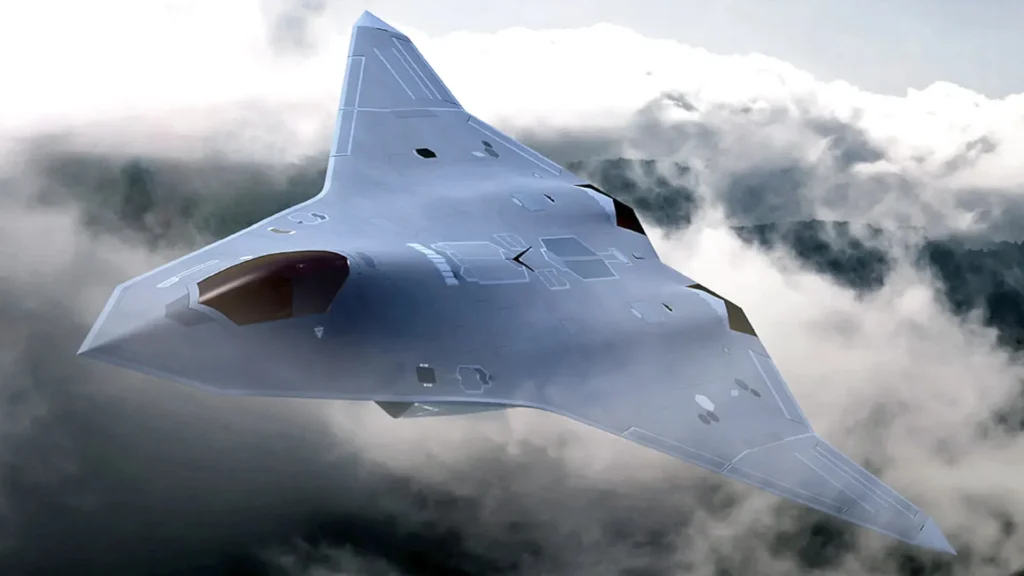Follow Us:

Share
On December 26, 2024, China unveiled two new fighter jets, widely referred to as sixth-generation or next-generation stealth fighters. This move has many experts speculating that China overtakes US in air power dominance. Meanwhile, the U.S. has stayed unusually quiet, leaving many wondering if it’s falling behind in the race for air dominance.
This gap in capability doesn’t seem to have developed overnight; instead, it is the culmination of years of systemic challenges, delayed innovation, and shifting priorities. Could this be the defining moment that signals the end of American air superiority, and is it already too late for the U.S. to reclaim its position in the skies?
China’s rise to dominance in aerospace innovation is a story of focus, efficiency, and rapid adaptation. Its ability to develop cutting-edge fighter jets on accelerated timelines starkly contrasts with the protracted and costly processes seen in the U.S. For instance, the J-20, China’s fifth-generation fighter, transitioned from its first demonstrator flight to operational deployment in just six years. By comparison, the American F-22 and F-35 programs took nearly 15 to 16 years to achieve similar milestones.

China has also invested heavily in emerging technologies such as artificial intelligence, hypersonic weapons, directed energy systems, and advanced stealth capabilities. These advancements have enabled the rapid prototyping and demonstration of two sixth-generation technology demonstrators.
Meanwhile, the U.S. faces mounting uncertainty with its Next Generation Air Dominance (NGAD) program, which some experts predict may not achieve operational capability until the late 2030s.

Andrew Hunter, the outgoing USAF acquisition executive, has cautioned that China might field its sixth-generation fighters before the U.S. achieves initial operational capability for NGAD.
The root of America’s struggles lies in its diminished industrial base and bureaucratic inefficiencies. During the Cold War, multiple companies such as General Dynamics, North American Rockwell, and McDonnell Douglas contributed to a vibrant aerospace industry.
Today, only Lockheed Martin, Boeing, and Northrop Grumman remain active in fighter jet design. The lack of competition has fostered complacency and rigidity in innovation.
Moreover, cost overruns and delays—epitomized by the F-35 program—highlight systemic inefficiencies that China has largely avoided by developing more cost-effective platforms.
China’s sixth-generation fighter jets reflect a strategic focus on range, adaptability, and multi-role capabilities. The larger of the two unveiled designs, potentially designated the J-36, features a tailless diamond-wing configuration powered by three engines.
Read also: China Unveils Sixth-Gen Fighter Concept at Zhuhai Airshow
It is optimized for extended range and loitering capabilities, with a potential combat radius of 1,500 to 2,000 miles—a necessity given China’s limited tanker resources. Additionally, this aircraft is likely designed to operate at altitudes above 50,000 feet, enhancing its sensor range, weapon reach, and fuel efficiency.
The Chinese jets also boast significant weapons capacity. The J-36’s large main weapon bays can accommodate heavy missiles such as the PL-17, while smaller outboard bays provide space for defensive systems.
These fighters are envisioned as multi-role platforms capable of performing long-range counter-air missions, ground strikes, suppression of enemy air defenses (SEAD), and acting as command hubs for drone swarms. Such versatility underscores China’s strategic emphasis on addressing Western Pacific security challenges.
In contrast, the U.S. has yet to reveal any tangible progress on its NGAD program. While details remain classified, it is evident that the program faces hurdles in both design and production. China’s ability to field its fighters at a fraction of the cost of American counterparts further tilts the scales, allowing for faster development and deployment cycles.
China’s unveiling of its sixth-generation fighters signifies a seismic shift in global air power dynamics. For decades, the U.S. relied on air superiority as the cornerstone of its military doctrine.
However, without a credible sixth-generation fighter in sight, this doctrine is at risk of becoming obsolete. The U.S. must confront not only technological and industrial challenges but also the stark reality that its adversaries are outpacing it in innovation and execution.
The question now is not whether the U.S. can match China’s advancements, but whether it can do so in time to maintain its strategic dominance. With the pace of modern warfare accelerating, the stakes have never been higher.
If America fails to overcome its industrial, economic, and strategic hurdles, it may lose its air superiority for the first time since World War II. Time will tell, but for now, China’s ascension in the skies seems inevitable.
Share
Defense Feeds is publication focusing on informing, engaging, and empowering the world by providing accurate information from defense technology.
Powered by Defense Feeds © 2025 – All rights reserved.